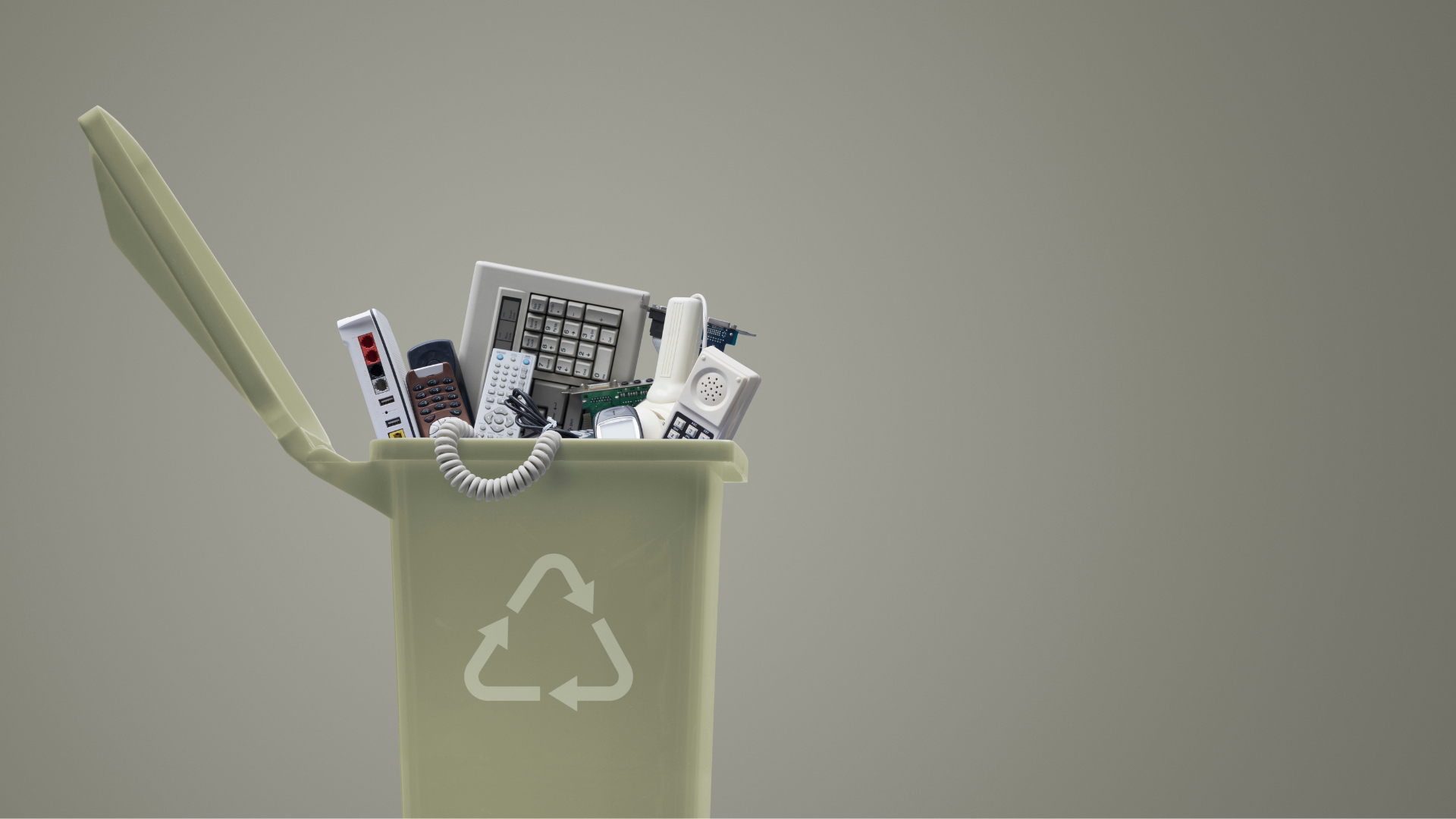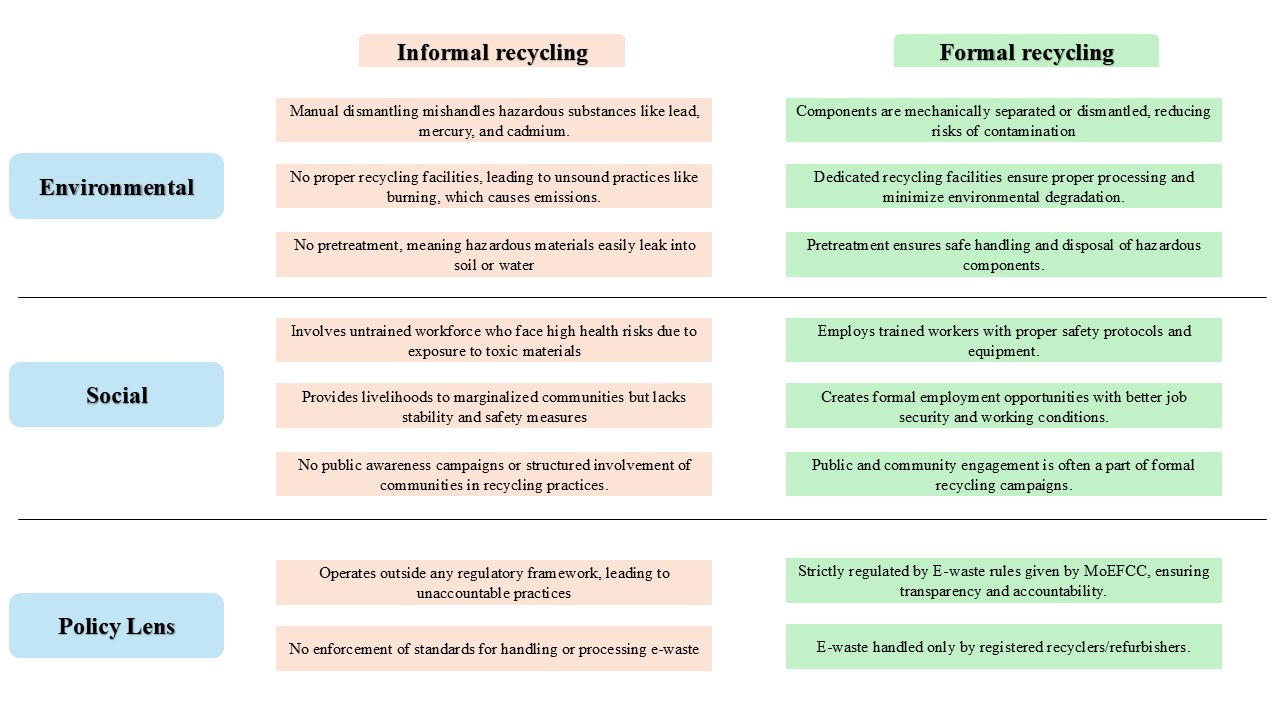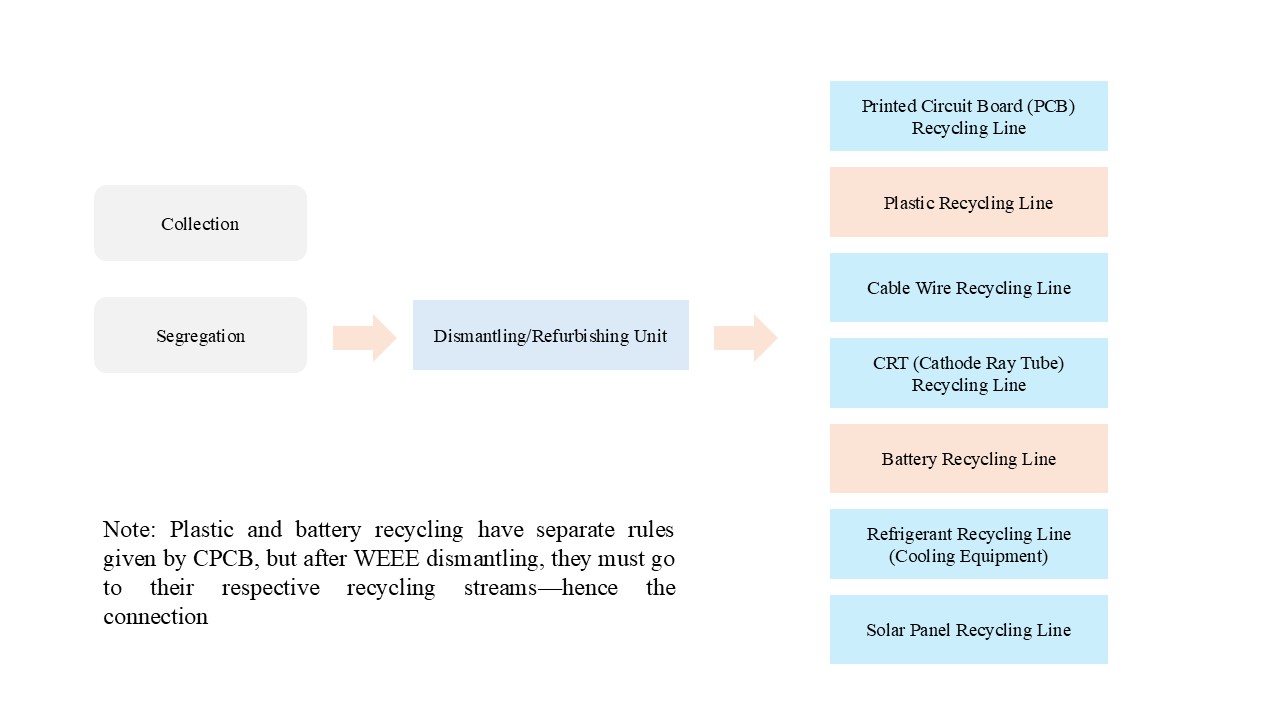Unregulated and Unseen

Understanding why the majority of e-waste recycling in India is handled by the informal sector
The rise in electronic waste (e-waste) in India has reached an alarming rate, making it crucial to address this issue effectively1. Proper management of e-waste through formal recycling practices can help reintroduce valuable resources into the system, aligning with the principles of a circular economy. In today’s digital age, our daily lives are heavily reliant on electrical and electronic devices. The E-Waste Management Rules 2022, as specified by the Central Pollution Control Board (CPCB), categorize 106 types of electrical and electronic equipment, including their components, consumables, parts, and spares. These categories encompass a wide range of devices – from household appliances to industrial and office equipment – all contributing to the e-waste stream. However, challenge arises when these devices become obsolete. The question is whether they are being directed toward formal recycling systems or informal recycling practices.
To understand more, let us examine main distinctions between formal and informal recycling systems and comprehend the reasons for the government’s push to convert informal recycling methods into formal recycling methods.

Figure 1: Comparison of Informal and Formal Recycling of WEEE
Informal recycling harms the environment, workforce, and public health. Additionally, from an economic perspective, it leads to inefficient metal recovery, that results in depleting valuable reserves.
The formal recycling of Waste Electrical and Electronic Equipment (WEEE) is a complex process due to the need for specialized infrastructure to handle different categories of waste. Each category requires distinct recycling setups, which involve significant investments. Apart from the above, recyclers must go through a very complex regulatory process such as seeking consent to establish and consent to operate. Additionally, they need to submit the list of EEE items to be recycle to Central and State Pollution Control Board (CPCB/SPCB) for the authorization process. After thorough checking, they will be issued the license as authorized recycler.

Figure 2: WEEE Dismantling and Recycling Flowchart
Challenges of Formalization of E-waste Management
• Formal systems capture only a fraction of the total e-waste produced. This is primarily because authorized recyclers often struggle to compete with unauthorized players when it comes to purchasing e-waste. Authorized recyclers are unable to offer higher prices to procure e-waste through tenders or collect it directly from sources of generation, as they have already made significant investments in setting up recycling facilities and complying with stringent regulations imposed by the SPCB and CPCB. In contrast, unauthorized recyclers operate without such overhead costs. For example, if an unauthorized recycler offers INR 100 for waste collection, an authorized recycler may only be able to offer INR 50. This price gap allows unauthorized players to dominate the market, where monetary incentives often dictate decisions.
• E-waste includes a wide range of equipment from large to medium and small categories, each requiring specialized machinery for recycling. This means that recyclers need multiple recycling lines to process different types of e-waste. One of the key challenges is that no single recycler can efficiently handle all kinds of e-waste due to these varying requirements. Many recyclers focus primarily on revenue generation, often selling e-waste to others instead of processing it themselves. This lack of proper processing creates uncertainty regarding e-waste undergoing formal or informal recycling, further complicating the formal recycling ecosystem.
• Fewer recyclers focus on advanced end-product processes like pyrometallurgy and hydrometallurgy, primarily due to high investment costs involved. In contrast, a larger number of informal recyclers are engaged in collection and primary processing activities, such as dismantling, segregation, depopulation, and shredding.
Way Forward
To promote proper disposal and reduce reliance on unlicensed recyclers, it is essential to enhance awareness through educational initiatives. Businesses can play a significant role in encouraging responsible recycling and resource recovery by implementing buy-back programs. Strengthening the capacity of formal recyclers through financial support, advanced technologies, and streamlined regulations can lead to greater efficiency and sustainability.
Additionally, engaging the informal sector through capacity building and skill development ensures safer practices and fosters collaboration. By integrating these strategies, we can establish a robust framework for sustainable e-waste management. Given the emphasis placed on this issue in the recent union budget, now is the perfect time to focus our efforts on these initiatives. As the saying goes, “It’s better to be safe than sorry!”
Authors: Simhadri Pavankumar, Manager – Innovation, PCI India, and Dr. Sudipta Mondal, Senior Director – Measurement Learning and Evaluation, PCI India
1 Baldé, C. P., Forti, V., Gray, V., Kuehr, R., & Stegmann, P. (2024). The Global E-Waste Monitor 2024. E-Waste Monitor. Retrieved from https://ewastemonitor.info/the-global-e-waste-monitor-2024/
